Guitar Amp Buzzing No Sound [Reason & 7 Way to Fix]
As a passionate guitarist, there’s nothing quite like plugging in your electric guitar and turning on your trusty amp, ready to unleash a world of captivating melodies. But what if your eagerly awaited jam session is met with an unwelcome guest – an annoying buzzing sound with no guitar output? This frustrating dilemma is a common nightmare for many guitarists, from beginners to seasoned professionals.
In this comprehensive guide, we will explore the perplexing issue of a guitar amp buzzing with no sound and delve into the various factors that can lead to this perplexing problem. Whether you’re a dedicated performer, a studio musician, or just a guitar enthusiast looking to create sweet melodies. Understanding and resolving this buzzing issue is crucial for an uninterrupted and immersive musical experience.
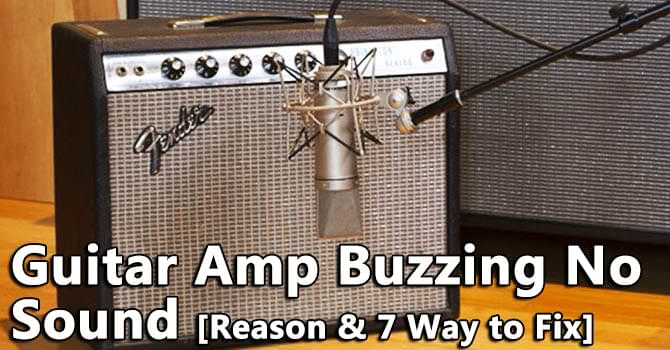
Join us as we journey through the realms of grounding issues, cable problems, component malfunctions, and environmental interferences to uncover the source of the buzzing and unveil a step-by-step troubleshooting process.
By the end of this guide, you’ll not only gain valuable insights into the causes behind the buzzing phenomenon but also possess the knowledge and confidence to troubleshoot and rectify the issue, restoring your guitar amp to its pristine sonic glory.
So, let’s embark on this quest to silence the buzzing and awaken the soulful sounds of your guitar.
# Table of Contents =>
- 1 Reason & Solved: Guitar Amp Buzzing No Sound –
- 1.1 Understanding the Problems –
- 1.2 Step-by-Step Troubleshooting Process –
- 1.3 Step 1: Basic Checks
- 1.4 Step 2: Isolating the Problem
- 1.5 Step 3: Investigating Grounding Issues
- 1.6 Step 4: Dealing with Environmental Interference
- 1.7 Step 5: Diagnosing Tube and Component Issues
- 1.8 Step 6: Cleaning the Amp
- 1.9 Step 7: Seeking Professional Help
- 1.10 Preventive Measures for Future Buzzing Issues –
- 1.11 FAQs –
Reason & Solved: Guitar Amp Buzzing No Sound –
Understanding the Problems –
Before we dive into the troubleshooting process, it’s essential to understand the common causes behind the buzzing and no sound in your guitar amp.
1. Grounding Issues:
Improper grounding can lead to electrical noise and interference, resulting in a buzzing sound without any actual guitar sound output.
2. Cable and Connection Problems:

Faulty or damaged cables and connections can introduce unwanted interference, disrupting the guitar signal and leading to buzzing.
3. Tube and Component Issues:
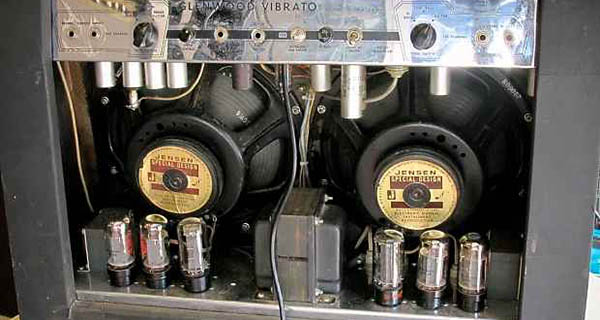
Worn-out tubes or damaged components within the amp can significantly impact sound quality and cause buzzing or no sound at all.
4. Environmental Interference:
External factors such as radio signals and electromagnetic fields can interfere with the amp’s circuitry and result in buzzing issues.
Step-by-Step Troubleshooting Process –
Now that we’ve identified the potential culprits, let’s go through a systematic troubleshooting process to pinpoint and resolve the issue.
Step 1: Basic Checks
Begin with some simple checks to ensure everything is in order before diving deeper into the troubleshooting process.
1. Verifying Power:
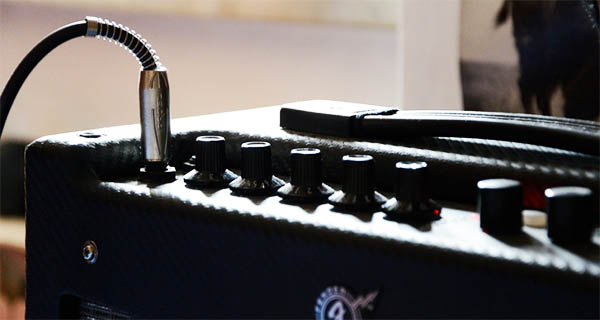
Check that the amp is correctly plugged into a functional power outlet and is receiving power.
2. Cable Inspection:
Examine all cables and connections for any signs of damage, such as frayed wires or loose connections.
Step 2: Isolating the Problem
Now, let’s determine if the issue lies with your guitar, amp, or a combination of both.
1. Testing the Guitar:

Try using a different guitar with the amp to see if the buzzing persists. If the buzzing disappears, the issue may lie with your guitar.
2. Testing the Amp:
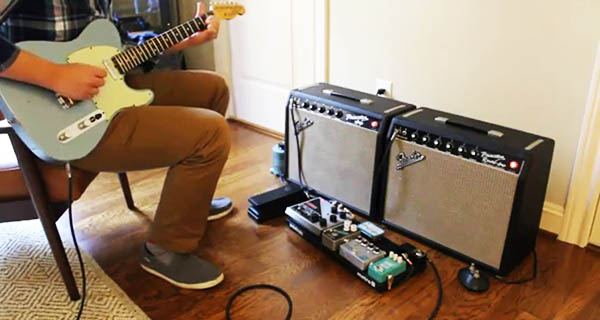
Conversely, test your guitar on another working amp. If the buzzing persists, the problem likely lies with the amp.
Step 3: Investigating Grounding Issues
Improper grounding can be a common cause of buzzing. Let’s address this potential issue.
1. Testing Power Outlet Grounding:
Use a tester or seek help from an electrician to ensure the power outlet has proper grounding.
2. Checking Amp’s Grounding Prong:
Verify that the amp’s grounding prong is intact and connected securely.
3. Using Ground Lift Adapter:
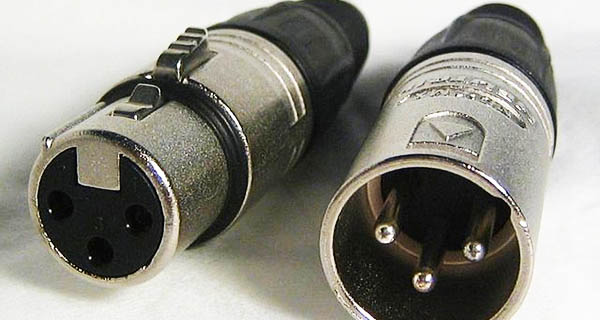
Try using a ground lift adapter to eliminate any grounding-related buzz.
Step 4: Dealing with Environmental Interference
External factors can contribute to the buzzing issue. Let’s explore ways to address this interference.
1. Relocation Test:
Move your amp to a different location to see if environmental factors are causing the buzzing.
2. Identifying Interference Sources:
Turn off or relocate nearby electronic devices that might be introducing interference to your amp.
Step 5: Diagnosing Tube and Component Issues
Worn-out tubes or damaged components can significantly impact your amp’s performance.
1. Visual Inspection:

Examine the tubes and other components within the amp for any visible signs of damage or wear.
2. Tube Replacement:
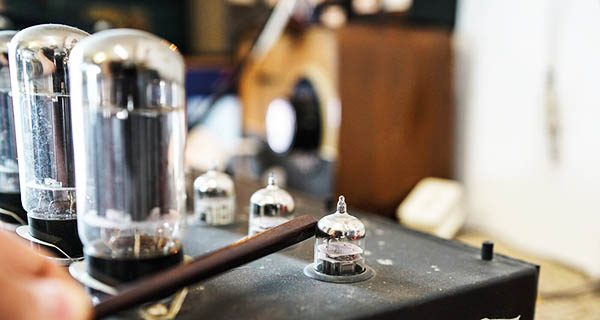
Consider swapping suspect tubes with new or known-working ones to identify faulty components.
3. Component Examination:
Inspect other amp components for potential issues that may contribute to the buzzing problem.
Step 6: Cleaning the Amp
Dust and debris can affect your amp’s performance. Let’s clean it up!
1. Removing Dust and Debris:
Carefully clean the amp’s interior to eliminate potential sources of interference.
2. Using Contact Cleaner:
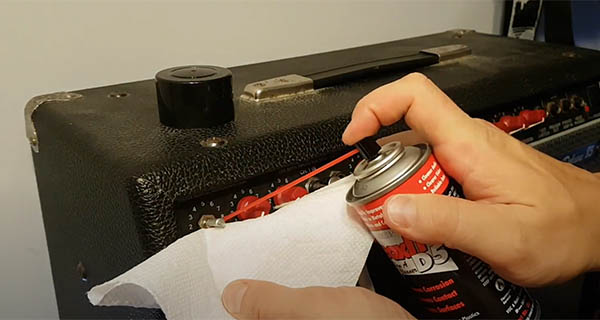
Apply contact cleaner to potentiometers and switches for improved electrical connections and reduced crackling sounds.
Step 7: Seeking Professional Help
If the issue persists, it might be time to consult a qualified technician.
1. When to Consult a Technician:
Recognize when DIY efforts are insufficient and seek professional assistance.
2. Communicating Troubleshooting Steps:
Provide the technician with information about the steps taken during troubleshooting for more accurate diagnosis.
Preventive Measures for Future Buzzing Issues –
Now that you’ve resolved the issue, let’s explore preventive measures to avoid future buzzing problems.
1. Regular Maintenance: Schedule periodic check-ups and cleaning to keep your amp in top-notch condition.
2. High-Quality Cables and Connections: Invest in reliable cables and connectors to minimize the risk of interference.
3. Surge Protection: Use surge protectors to safeguard your amp against power fluctuations and electrical damage.
4. Environmental Control: Be mindful of amp placement to minimize the impact of external interference sources.
Hopefully, you’ve successfully troubleshooted and resolved the buzzing guitar amp issue with no sound. Armed with the knowledge and steps outlined in this guide, you can confidently tackle any future buzzing problems that may arise. Remember, a well-maintained amp will ensure you continue to produce captivating and flawless guitar tones for years to come. Happy playing!
FAQs –
Q: Why is my guitar amp buzzing but producing no sound?
Answer: There could be various reasons for this issue, including cable problems, faulty connections, tube issues, or even internal component failure.
Q: What’s the first thing I should check if my guitar amp is buzzing without producing sound?
Answer: Start by checking the guitar cable and connections. A loose or damaged cable can often cause buzzing or no sound issues.
Q: Could the buzzing be caused by a tube issue in my tube amp?
Answer: Yes, malfunctioning tubes can cause buzzing and other sound-related problems. If you have a tube amp, consider checking or replacing the tubes.
Q: Are there any specific settings on the amp that might cause buzzing with no sound?
Answer: Improper settings, such as a faulty EQ configuration or a bad volume knob, could contribute to these issues. Make sure all settings are properly adjusted.
Q: Is it possible that my guitar pickups are causing the buzzing?
Answer: Faulty or improperly shielded pickups can indeed contribute to buzzing issues. However, if the guitar works fine on other amps, the problem likely lies with the amp.
Q: Can a blown speaker cause buzzing without sound?
Answer: A damaged speaker can produce buzzing or distorted sounds. If you suspect the speaker is the issue, testing with a different speaker can help confirm.
Last Updated on September 14, 2023 by Perry Garner


